
|
Astronomy Picture Of the Day (APOD)
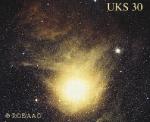 Antares
Antares
26.07.1998
Antares is a huge star. In a class called red supergiant, Antares is about 700 times the diameter of our own Sun, 15 times more massive, and 10,000 times brighter. Antares is the brightest star in the constellation of Scorpius and one of the brighter stars in all the night sky.
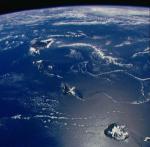 Hawaii
Hawaii
25.07.1998
Aloha! With the graceful arc of the Earth's limb in the background, the Hawaiian Island archipelago is visible in this stunning photo taken by the astronauts onboard the shuttle Discovery in October of 1988. Along with popular beaches and tropical resorts, these volcanic islands offer extreme elevations with dark, dry, cloudless skies.
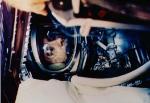 Alan B. Shepard Jr. 1923 1998
Alan B. Shepard Jr. 1923 1998
24.07.1998
On another Friday (May 5, 1961), at the dawn of the space age, NASA controllers "lit the candle" and sent Alan B. Shepard Jr. arcing into space atop a Redstone rocket. The picture shows...
 X Ray Pulsar
X Ray Pulsar
23.07.1998
This dramatic artist's vision shows a city-sized neutron star centered in a disk of hot plasma drawn from its enfeebled red companion star. Ravenously accreting material from the disk, the neutron star spins faster and faster emitting powerful particle beams and pulses of X-rays as it rotates 400 times a second.
 Dark Craters on Ganymede
Dark Craters on Ganymede
22.07.1998
Ganymede has craters within craters within craters. The old surface of the largest moon in the Solar System shows its age by the large amount of these impact features. The above picture released last...
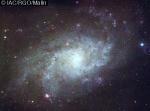 Nearby Spiral M33
Nearby Spiral M33
21.07.1998
M33 is a prominent nearby spiral galaxy. Nicknamed the Triangulum, M33 is one of the larger members of the Local Group of Galaxies. Two massive spiral galaxies dominate the Local Group: M31 and our Milky Way Galaxy. M33 is the only other spiral galaxy known in the Local Group.
 La Nina Watch
La Nina Watch
20.07.1998
Goodbye El Niño. Hello La Niña? Scientists are watching to see if an evolving pool of relatively cool water in the mid-Pacific Ocean will develop into a full "La Niña". Over the past several months, the water temperature in the Equatorial Pacific Ocean has been doing a flip-flop.
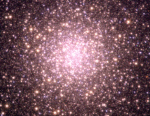 Globular Cluster M3
Globular Cluster M3
19.07.1998
This huge ball of stars predates our Sun. Long before mankind evolved, before dinosaurs roamed, and even before our Earth existed, ancient globs of stars condensed and orbited a young Milky Way Galaxy.
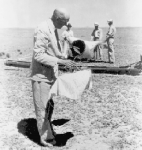 Rockets and Robert Goddard
Rockets and Robert Goddard
18.07.1998
Robert H. Goddard, one of the founding fathers of modern rocketry, was born in Worcester Massachusetts in 1882. As a 16 year old, Goddard read H.G. Wells' science fiction classic "War Of The Worlds" and dreamed of spaceflight. By 1926 he had designed, built, and launched the world's first liquid fuel rocket.
 Hyakutake: Stars Through A Comet Tail
Hyakutake: Stars Through A Comet Tail
17.07.1998
Comets are cosmic icebergs. They follow very elongated orbits which carry them from the frozen, remote outer reaches of the Solar System to close encounters with the Sun. Heated by sunlight, they slough off layers of material as gas and dust, forming their characteristic awe-inspiring comas (heads) and tails.
|
January February March April May June July August September October November December |
|||||||||||||||||||||||||||||||||||||||||||||||||